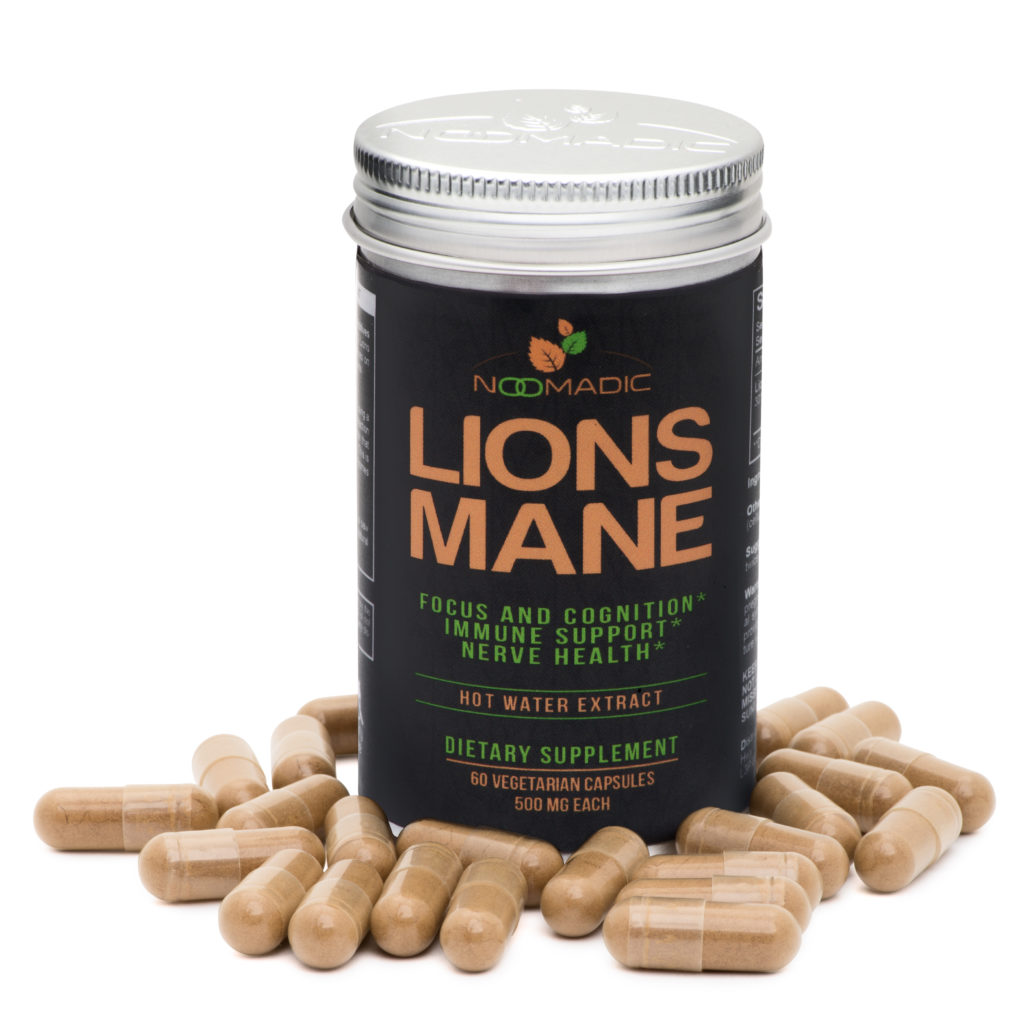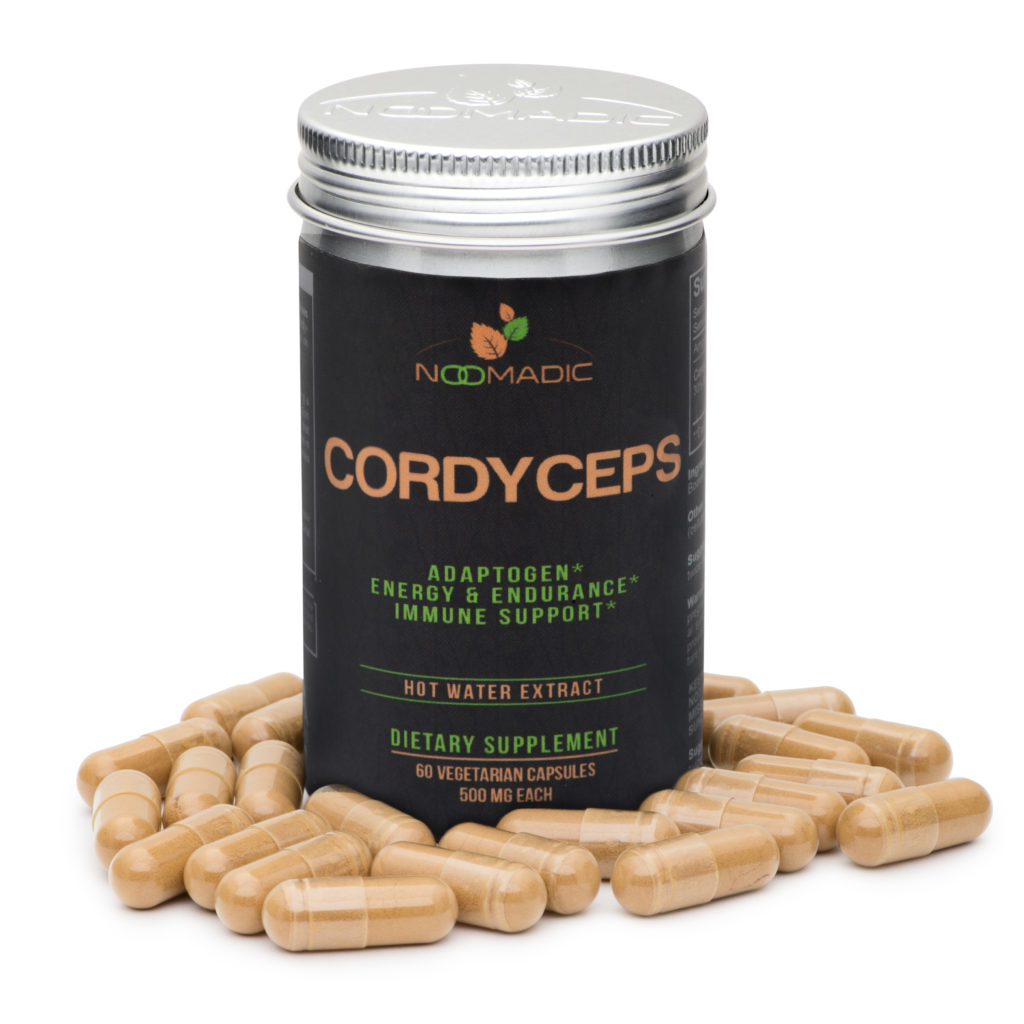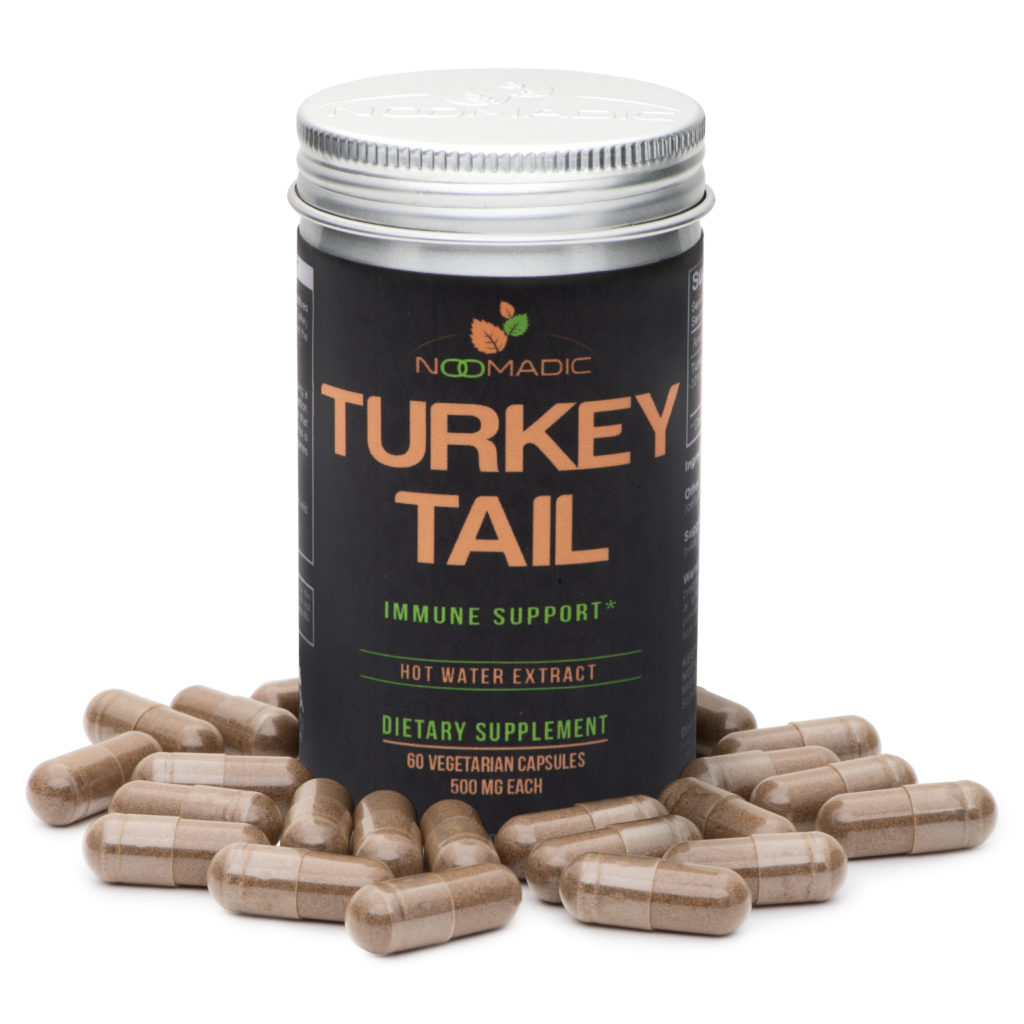There are over 2000 edible or medicinal mushrooms in the world. Despite this amazing variety, there are some key similarities between different medicinal mushrooms. Chief among these is the fact that most medicinal mushrooms contain the same type of main active ingredient—polysaccharides.
In addition, many medicinal mushrooms also contain terpenoids—another important active compound. But what are these ingredients and why do they matter?
In a hurry? These are the Best Medicinal Mushroom Extracts on the Market.
What are Polysaccharides?

Polysaccharides (complex sugars) are carbohydrate molecules composed of long chains of smaller monosaccharides (simple sugars) linked by glycosidic bonds. These natural compounds have a wide range of functions in nature, such as storing energy, cellular messaging, and structural support.
Medicinal mushrooms contain many different polysaccharides, but one specific type called beta-d-glucans are responsible for most of their proposed health benefits. Because polysaccharides are water-soluble, they are typically extracted by using the hot water extract method.
What are Beta-Glucans?
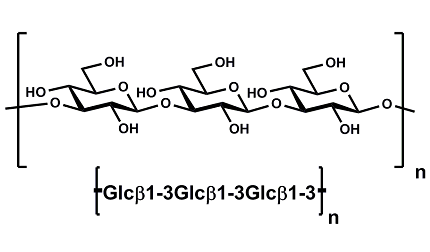
Beta-glucans (also known by their more technical name beta-d-glucans) are a special class of indigestible polysaccharide fibers. They are found not only in mushrooms but also bacteria and plants such as oat and barley. However, only the beta-glucans found in fungi (mushrooms) have the special β-(1→6) branching structure that has the most medicinal potential.
These special 1-6 beta-d-glucans are responsible for many of the health-promoting properties of medicinal mushrooms, such as antioxidant activity, boosted immune system function, and blood sugar and cholesterol regulation. They are found in virtually all medicinal mushrooms, such as Lions Mane, Turkey Tail, Shiitake, Reishi, Chaga, and Cordyceps.
Terpenoids: Another Important Mushroom Ingredient

Although polysaccharides, and—beta-glucans specifically—are the most important ingredient to look for in mushroom supplements, they are certainly not the only ones. After polysaccharides, the second-most important active ingredients in medicinal mushrooms are terpenoids.
Not to be confused with their parent compound terpenes, terpenoids are natural compounds produced by many different organisms, including mushrooms. In particular, diterpenoids, triterpenoids, and sesquiterpenoids are known to have medicinal properties. In fact, terpenoids seem to share many of the same medicinal benefits as beta-glucans, such as boosting immune system function.
One important thing to keep in mind with terpenoids is that they are not water-soluble. For this reason, they must be extracted from the chosen mushroom through alcohol extraction. Alcohol extraction is typically done as an additional step after hot water extraction, which is why it is called a dual extract.
For example, the Reishi and Chaga mushrooms contain a significant amount of triterpenoids alongside beta-glucans. As such, dual extraction is necessary to produce a high-quality Reishi or Chaga mushroom extract that contains significant levels of both beta-glucans and terpenoids.
The Problem with Polysaccharide Testing
Armed with the knowledge of the difference between polysaccharides, beta-glucans, and terpenoids, we can now make more educated decisions when choosing medicinal mushroom supplements.
As it turns out, many supplement companies only test for polysaccharides when selling mushroom products. They list the polysaccharide content on the label and use these large number (e.g. 60%) to promote their products as being highly efficacious. This makes sense at first—after all, polysaccharides are the main active ingredient in mushrooms.
There is, however, one big problem: beta-glucans are not the only type of polysaccharide found in mushrooms. In particular, most mushrooms contain high levels of alpha-glucans—a type of polysaccharide that has no medicinal properties.
These alpha-glucans—such as glycogen and starch—are typically found in much higher quantities than the desired beta-glucans. This is especially the case for mushroom mycelium products that typically use grain, which also contains alpha-glucans.
This means that high polysaccharide content can be very misleading, since most of them can come from these inert alpha-glucans. For this reason, it is important to look for products that list the exact level of beta-glucans rather than all polysaccharides.
In addition, polysaccharide testing does not tell us anything about the terpenoid content, which is important as well. Indeed, the only case in which total polysaccharide content is enough is when we know the product also contains significant levels of terpenoids, which means it can still be effective.
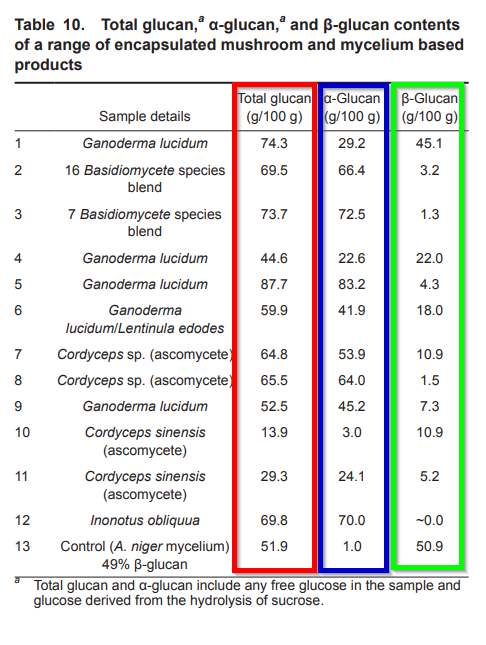
Here is a chart that shows why there is a severe issue by relying on just polysaccharide testing.
Red shows Total Glucan
Blue shows Alpha-Glucans
Green shows Beta-Glucan
Lets compare sample #4 and sample #5 which are both Ganoderma lucidum (Reishi). If you were to rely on Polysaccharide testing, sample #5 would appear to be a better product with 87.7 total glucans. However; if you look at the more important Beta-Glucans it is obvious that #4 is the better product with 22 Beta Glucans (more than 5x than sample #5).
This is why it is essential to use Beta-Glucan testing as an indicator for quality.
Beta-Glucan Testing: The Ideal Choice
With the exception of some specific terpenoid-heavy mushrooms such as the reishi, beta-glucans are the most important active ingredient in medicinal mushrooms.
As such, if you want to find a medicinal mushroom product that is guaranteed to be high-quality, then you need to look for one that tests for beta-glucans. As we’ve described above, beta-glucans—NOT polysaccharides—are the single most important active ingredient in mushroom supplements.
And if you’re looking for a mushroom that contains a significant portion of terpenoids, then you will want to find a product that also lists terpenoid levels. This will ensure that you’re getting the highest-quality supplement.
In a hurry? These are the Best Medicinal Mushroom Extracts Measured by Beta-D-Glucans.
Summary and Conclusion
We hope this article helped clear up some confusion on how what to look for when choosing medicinal mushroom products.
Despite the fact that many supplement manufactures use high polysaccharide content to market their supplements, this number is nearly meaningless without knowing the beta-glucan content. For all you know, 95% of those polysaccharides might be inert alpha-glucans from starches.
As we noted above, beta-glucans and terpenoids are the most important compounds to look for on mushroom supplement labels. High levels of beta-glucans (15% or higher) are typically an indicator of a high-quality product, and if the label also lists terpenoid content then that’s even better.


